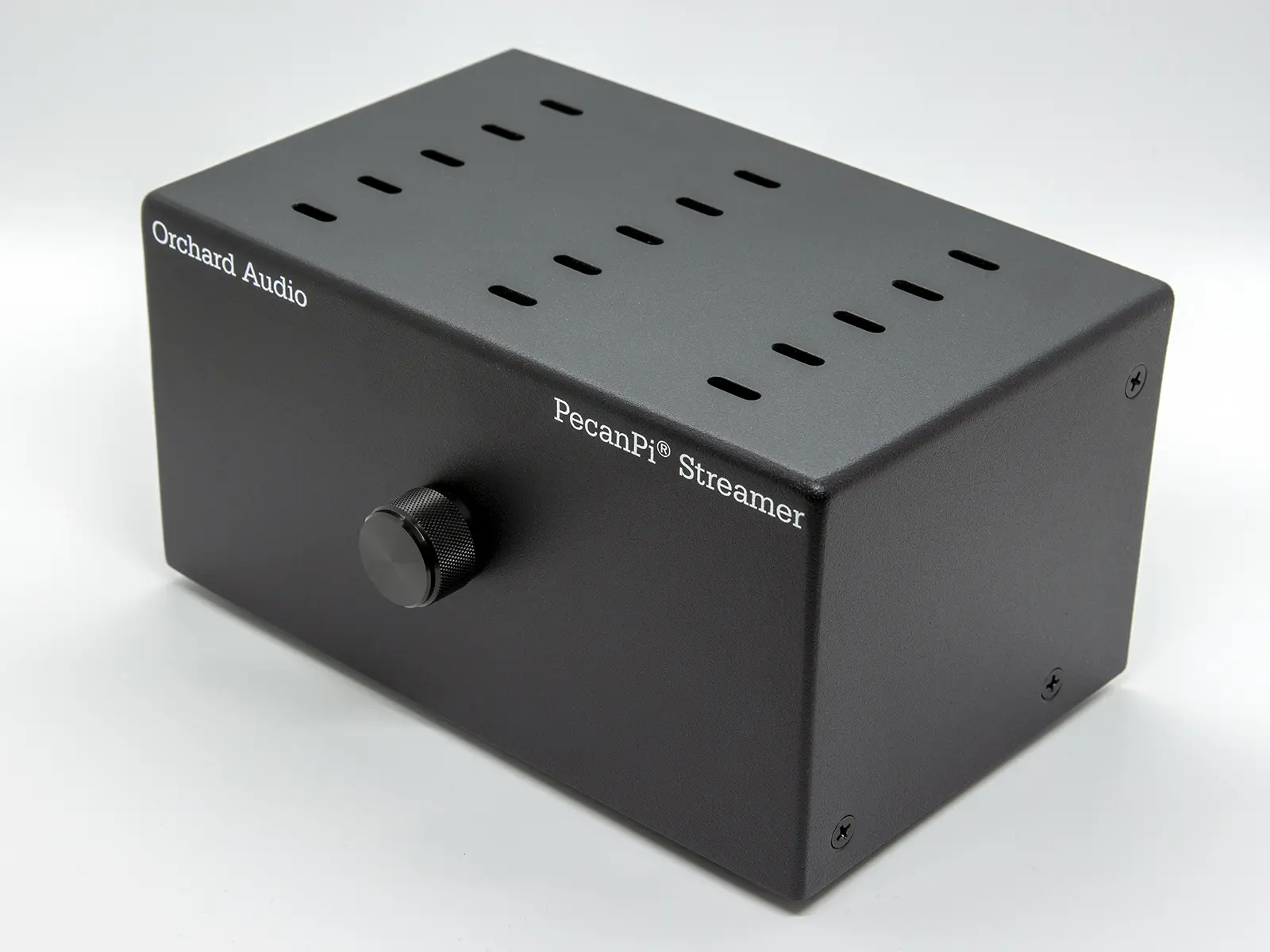Orchard Audio’s original PecanPi was a very good-sounding DAC HAT for Raspberry Pi, but now it’s time to talk about its successor PecanPi+. Is it a significant upgrade or just a mild refresh that doesn’t deserve your attention? I’ll immediately say that it’s the first one – a very noticeable upgrade of the already good product.
Build and Features
It’s not easy to talk about the PecanPi+ build and features because you can go down many different routes during the purchase. From the plain PCB board that you can put on top of your own Raspberry Pi as a HAT to a fully assembled streamer with different connections and functions. The board variant is what I’ve got for testing and it looks like this:
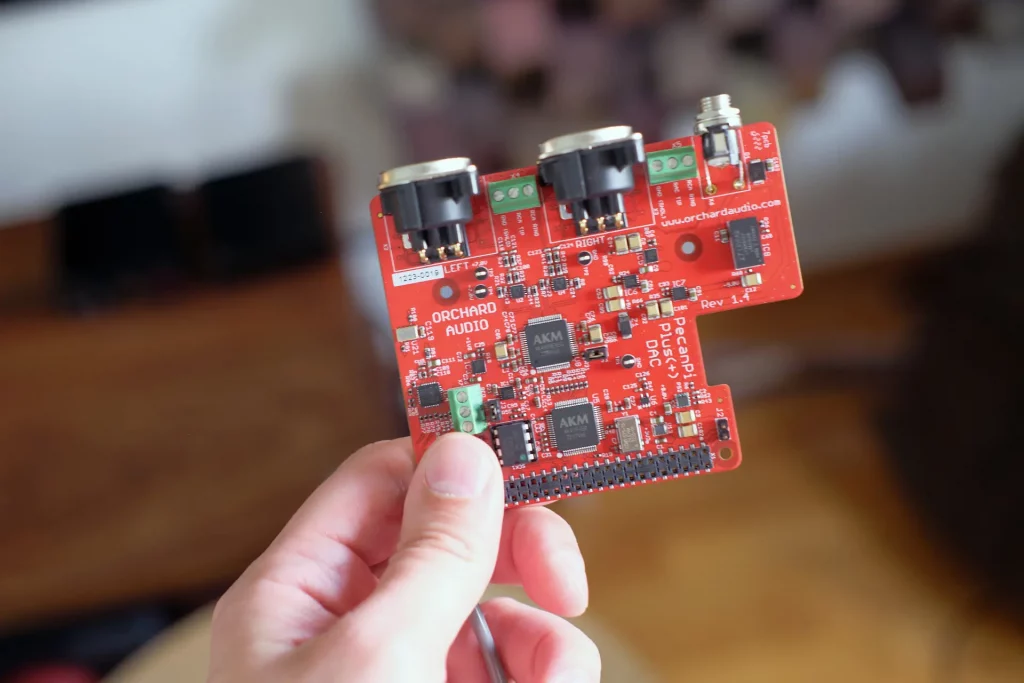
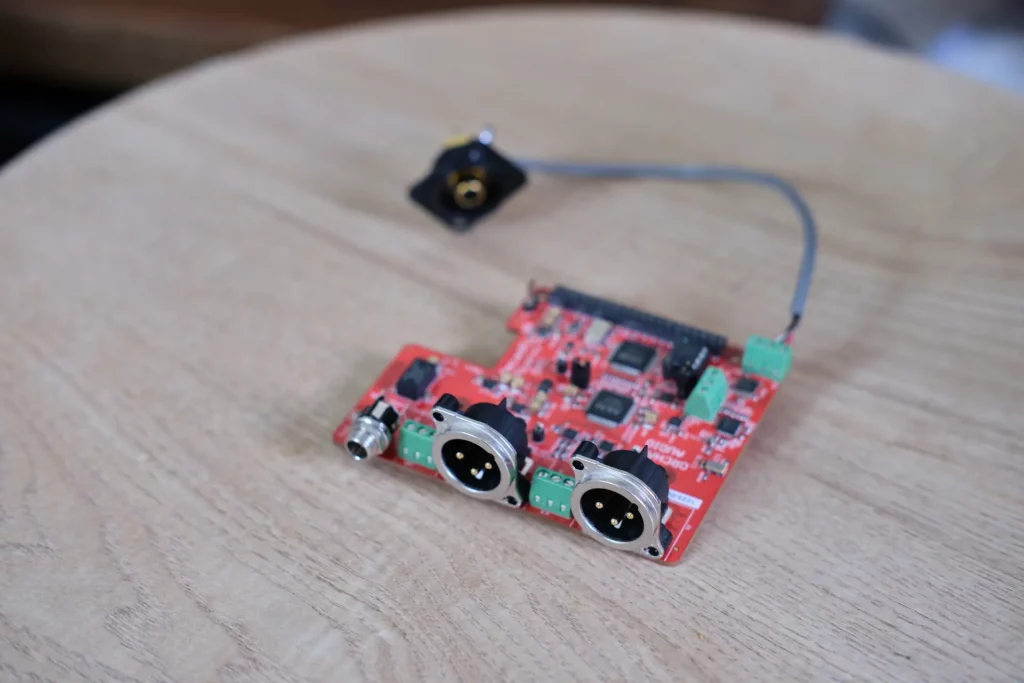
As previously mentioned, it can be put as a HAT on top of your Raspberry Pi, but with PecanPi+ there is one surprise. You can use it as a standalone DAC with a SPDIF input. Of course, it would be preferable if you put it in some kind of box and you can find some solution on Orchard Audio’s site as well as on eBay. XLR outputs are premounted on the board but you choose if you want to purchase and install RCA sockets and headphone output. For more clarity on all these options and pricing, I suggest to visit the official webpage.
On the opposite side of this DIY experience sits an option to buy a fully assembled product in an aluminium casing with an R-Pi motherboard already installed, chosen connections on the back, because you can’t have them all at once, and a volume potentiometer that makes the output of this DAC variable. This maxed-out version will cost you around 900 USD. I can’t comment on the build quality and feel of the assembled device since I didn’t have it in my hands, but you can see the images for yourself.
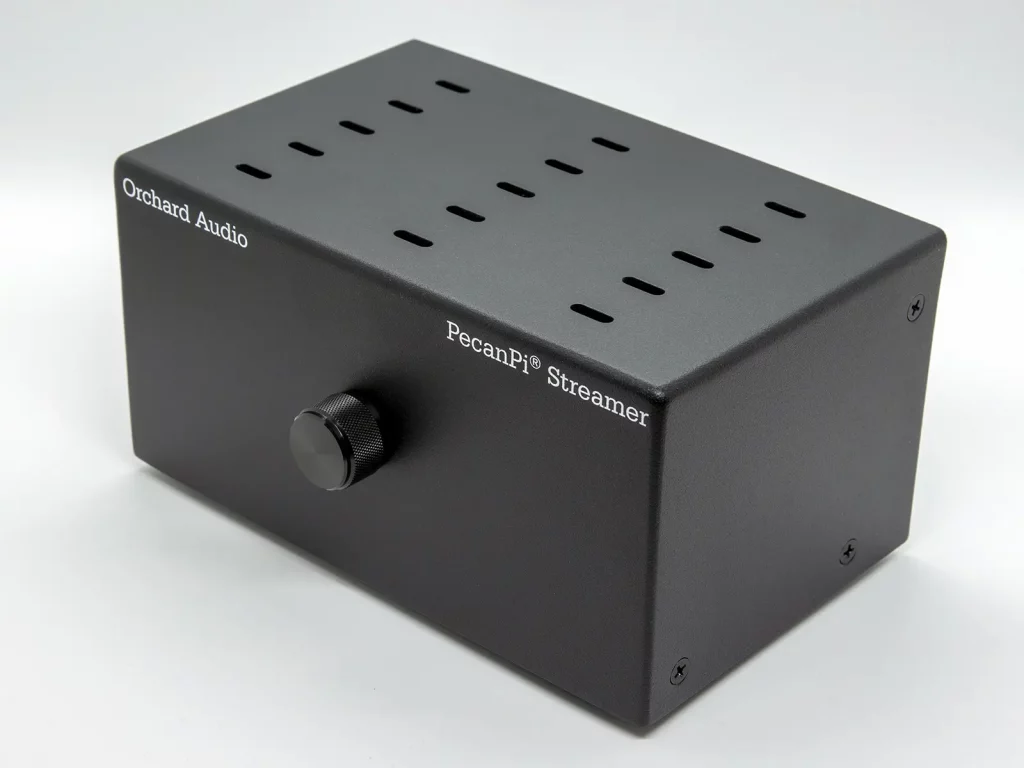
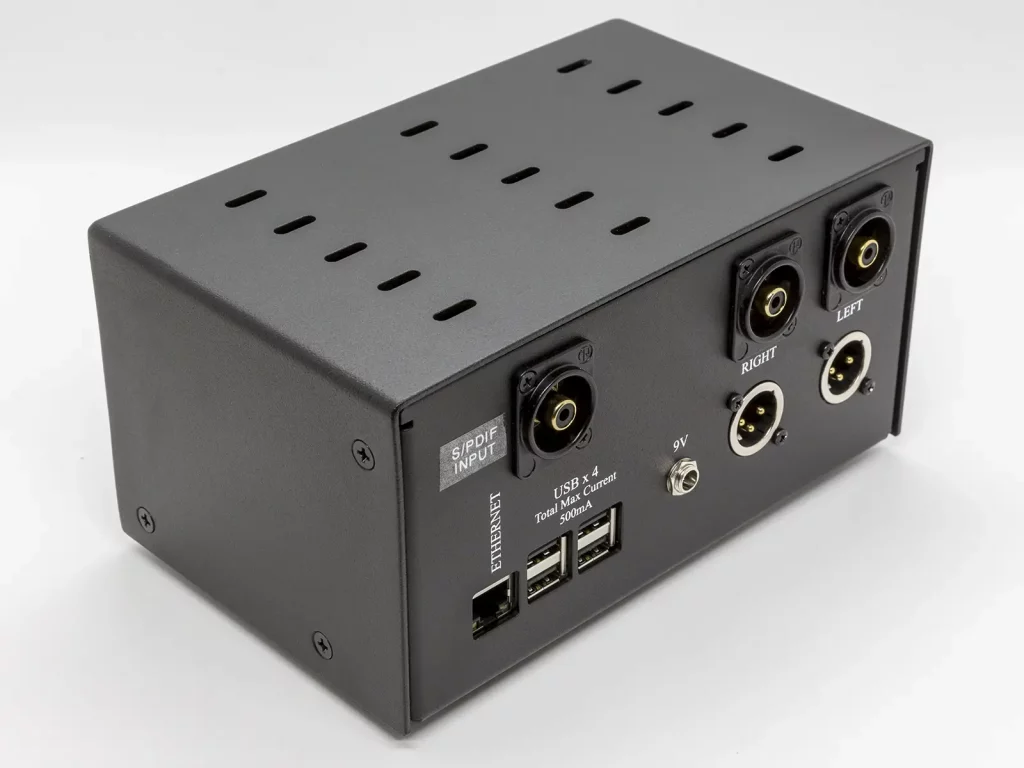
Tech Inside and Software
Now the whole PecanPi+ is based around the Asahi Kasei’s flagship AK4499EXEQ combined with AK4191EQ. SPDIF receiver that enables PecanPi+ to function as a standalone DAC is Cirrus Logic CS8416. A truly balanced dual differential output stage uses OPA1612s for line outputs and OPA1622s for headphone out. Talking about the headphone out, it’s not an afterthought either, it can deliver up to 1.7 Watts into the 32 Ohms load on its balanced out.
Talking about how is Raspberry Pi used as a digital streamer and what kind of OS options you can choose from is beyond the scope of this review. If you’re interested in that, please take a look at my older video about the topic: Raspberry Pi as an Audio Streamer Guide.
Sound (Streamer)
I started my test stacking PecanPi+ on top of the Raspberry Pi 4 and using it as a streamer and a DAC. The bassline is quick, very tight, disciplined, and reveals plenty of tone texture from acoustic instruments like double bass for example. The rest of the spectrum behaves in the same fashion, making the overall sound very clear and crisp. The highest frequencies are well extended adding a nice sense of air to recordings. All in all, the sound is highly revealing, digging fine details from recordings with ease.
Moving to the soundstage, PecanPi+ is capable of positioning tones with great focus and precision, skilfully separating them and making sense of recordings that might sound cluttered and blurred on a lesser device. Truth be told, all of that is happening inside of a modestly wide and deep soundstage.
Finally, PecanPi+ is quite capable when it comes to micro-dynamics. Following fast rhythms with quick and sudden changes comes easily to this DAC. Big dynamic swings on the other hand are a bit less impressive, and there are more gutsy-sounding DACs to be found on the market.
Sound (Standalone DAC)
I detached the PecanPi+ board from the Raspberry Pi and used it as a standalone DAC over its only digital input – SPDIF. In this case, all of the sonic qualities observed in the previous paragraph still stand. Of course, the result will vary depending on the choice of the digital platform you’re using to feed the SPDIF input. The cable that you chose to connect the two will influence the final result a bit too. But this part of the story is once again too wide to cover properly in this review. Instead, I’ll just say that PecanPi+ makes the most sense when used as a HAT on top of Raspberry Pi. Beating that result noticeably requires an external digital streamer that is more expensive than the DAC itself and it doesn’t really make much sense.
Comparisons
Orchard Audio PecanPi – The original version without the “plus” in the name used a different DAC solution and sounded different too. I loved the original because of its full and warm tone timbre. PecinPi+ took a turn towards noticeably more resolving sound, with greater detail retrieval, greater bass control, and better pinpointing. That said, some warmth was lost in the process and the original did sound like having more meat on its musical bones. Having that in mind, I feel that PecanPi Plus’ increase in resolution and detail retrieval puts it in a tier above the original. That kind of improvement makes it worth putting up with a slightly cooler tone and trying to correct it by other means in my setup.
Topping E70 Velvet is a standalone DAC without streaming capabilities. That’s OK because it’s also fifty bucks cheaper than the PecanPi+ board, and it’s a finished product that looks and feels nicer to use. That said, when compared head to head, PecanPi+ shows it is capable of retrieving more details and digging into tone texture better. Every tone is slightly better focused and pinpointed better too. Topping E70 velvet sounds slightly veiled in a direct comparison. So to put it simply, E70 velvet is not a match to PecanPi+.
RME ADI-2 DAC FS is a well-known DAC and head-amp combo with a price sitting around $1300. That’s higher than a fully assembled PecanPi+ streamer. But sonic-wise they’re much more alike than they’re different. In fact, I bet that many untrained ears would struggle to differentiate them. So given that there is not much difference in terms of sound quality, it leaves you with features. RME’s DAC comes in an arguably nicer package, with a display, remote, advanced EQ settings, more digital inputs, and all of the analog outputs you can wish for. PecanPi+ is also a very functional streamer but aside from that you get only SPDIF digital input, and you can’t have all of the possible outputs at the same time. There’s not enough room on the device and you have to make some choices. That said, it costs less and offers equal performance, so if you can make a PecanPi+ setup that works for you – it might present a better value.
Gustard A26 is a DAC and a streamer too. It has a screen, more digital inputs, a display, and a remote. It’s also twice the price and has a premium build, but no headphones out. Those features aside, A26 is where you need to go if you want to clearly better PecanPi+ in terms of sound quality. Tonally, they’re quite similar. Both of these DACs prioritize resolution and speed. That said, Gustard offers a bigger and airer soundstage, and better dynamics too. There’s no beating around the bush here – Gustard A26 is a better DAC, but I find no problem with that since it’s noticeably pricier too.
Finally, I know that many of you would ask me about the EverSolo DMP-A6 comparison. Unfortunately, I had to return my PecanPi+ sample before the DMP-A6 arrived, and the performances of these two are close. That said, using other DACs as a reference point, I do feel that PecanPi+ has an edge when it comes to sheer resolution. So if performance is what you care about the most, PecanPi+ should have the edge. EverSolo on the other hand looks nicer and has features like a display, SSD slot, digital outputs, etc. So two great devices with a similar price but different set of features and qualities. There’s not a clear winner in my mind here. Think about what you want and what you need from a device and decide for yourself.
Conclusion
Orchard Audio made a worthy successor to the original PecanPi. The Plus version is simply a better-sounding device. But more than that, PecanPi+ presents a great value in the current market since its price-to-performance ratio is very hard to beat.
